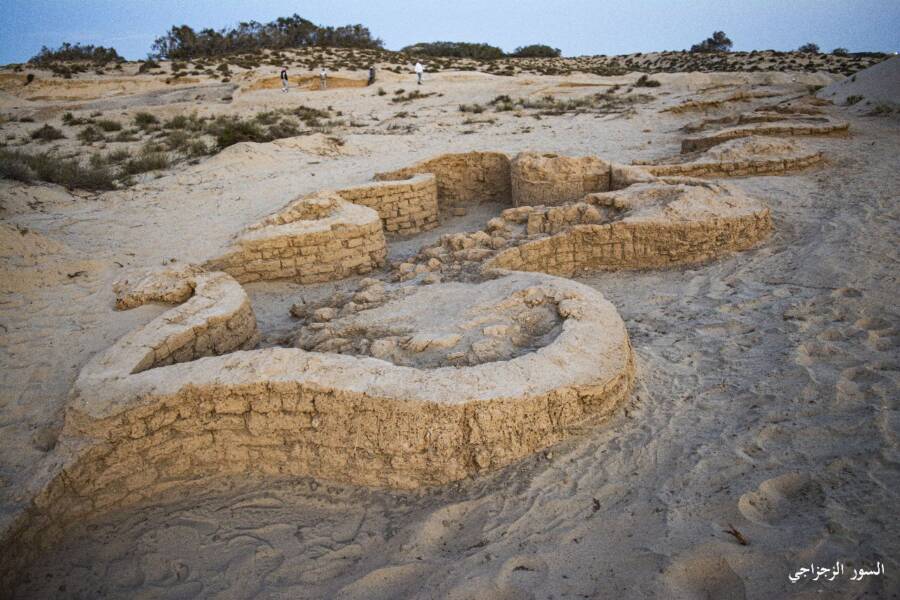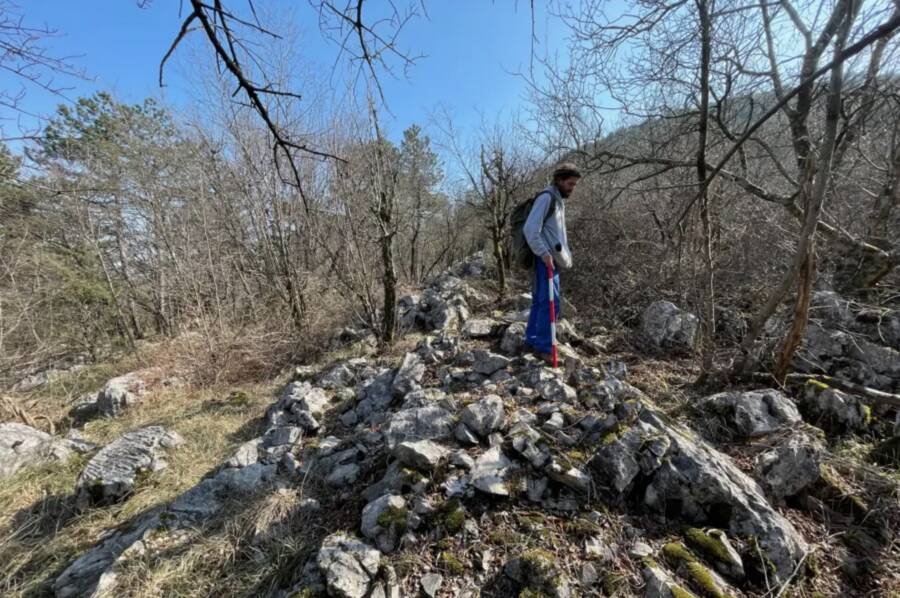0 Commentarii
0 Distribuiri
114 Views

Director
Elevate your Sngine platform to new levels with plugins from YubNub Digital Media!
-
Vă rugăm să vă autentificați pentru a vă dori, partaja și comenta!
-
 YUBNUB.NEWSIrans Uranium Stockpile Survives, Shocking RevelationThe International Atomic Energy Agency (IAEA) believes that most of Irans enriched uranium stockpile survived the U.S. and Israeli airstrikes on nuclear sites in June. Director-General Rafael Grossi0 Commentarii 0 Distribuiri 114 Views
YUBNUB.NEWSIrans Uranium Stockpile Survives, Shocking RevelationThe International Atomic Energy Agency (IAEA) believes that most of Irans enriched uranium stockpile survived the U.S. and Israeli airstrikes on nuclear sites in June. Director-General Rafael Grossi0 Commentarii 0 Distribuiri 114 Views -
 YUBNUB.NEWSHarvard Slashes Admissions Seats Despite Massive Endowment Gains, Winning Back Federal FundsHarvard Universitys Faculty of Arts and Sciences (FAS) has cut more than half of its admissions seats in two graduate programs over the next two years in order to balance both our academic and fiscal0 Commentarii 0 Distribuiri 115 Views
YUBNUB.NEWSHarvard Slashes Admissions Seats Despite Massive Endowment Gains, Winning Back Federal FundsHarvard Universitys Faculty of Arts and Sciences (FAS) has cut more than half of its admissions seats in two graduate programs over the next two years in order to balance both our academic and fiscal0 Commentarii 0 Distribuiri 115 Views -
 YUBNUB.NEWSNegotiate With Us Now: Democrats Demand GOP Bail Them Out Of Schumer-Caused ShutdownSenate Democrats are rejecting Republican overtures to end the government shutdown, leading to accusations that Senate Minority Leader Chuck Schumer is keeping the government hostage until all of his0 Commentarii 0 Distribuiri 114 Views
YUBNUB.NEWSNegotiate With Us Now: Democrats Demand GOP Bail Them Out Of Schumer-Caused ShutdownSenate Democrats are rejecting Republican overtures to end the government shutdown, leading to accusations that Senate Minority Leader Chuck Schumer is keeping the government hostage until all of his0 Commentarii 0 Distribuiri 114 Views -
One Of Philly's Best Restaurants Is So Good You'll Feel Like You're In ItalyOne Of Philly's Best Restaurants Is So Good You'll Feel Like You're In Italy Philadelphia's Washington Square West has been home to Vetri Cucina for more than a quarter century. Since opening in 1998, the establishment has honored the legacy...0 Commentarii 0 Distribuiri 766 Views
-
Score a lifetime license to MS Office 2021 for Mac — now only $69.97Score a lifetime license to MS Office 2021 for Mac — now only $69.97 TL;DR: If you use a Mac and still don’t have lifetime access to Microsoft Office 2021, this $69.97 deal is a no-brainer. If you’re a Mac user who’s tired of recurring subscriptions, we’ve got some good news: You can now own Microsoft Office Home and Business 2021 for...0 Commentarii 0 Distribuiri 760 Views
-
The massively expandable Bluetti Apex 300 is $800 off at AmazonBest portable power station deal: Save 33% on the Bluetti Apex 300 SAVE $800: The Bluetti Apex 300 is on sale at Amazon for $1,599, down from the standard price of $2,399. That's a 33% discount that's within one cent of matching the lowest we've ever seen at Amazon. $1,599 at...0 Commentarii 0 Distribuiri 741 Views
-
The iOS 26.1 beta 4 brings two important updates to your iPhoneThe iOS 26.1 beta 4 has arrived. Here's what's new. Apple has released a new iOS beta, and this one brings a big change to Liquid Glass.It seems Apple heard the critiques from Liquid Glass haters, and the new iOS 26.1 beta 4 offers a solution. What's new? If you haven't downloaded the beta, don't worry. We'll tell you. Liquid Glass opacity...0 Commentarii 0 Distribuiri 738 Views
-
 ALLTHATSINTERESTING.COMArchaeologists Have Discovered A 3,500-Year-Old Egyptian Military Fortress With Ancient Ovens And Fossilized DoughEgyptian Ministry of Tourism and AntiquitiesThe fortress was constructed to protect ancient Egypts eastern borders.During excavations at the Tell El-Kharouba archaeological site in Egypts Sinai Desert, archaeologists found a network of stone walls and other artifacts that they say were once part of a fortress but not just any fortress. The ancient site sprawls across 85,000 square feet, the equivalent of over half a city block, and once protected vital trade routes. Not only does it demonstrate the brilliance of ancient Egyptian rulers, but it also offers insight into how Egyptian soldiers lived 3,500 years ago. The Sprawling Fortress In The Sinai DesertAccording to a Facebook post from the Egyptian Ministry of Tourism and Antiquities, the ancient fortress was uncovered during excavations at the Tell El-Kharouba archaeological site in the northern Sinai Desert, close to where another (far smaller) fortress was discovered in the 1980s.The structure, which spans an area of 85,000 square feet, was used more than 3,000 years ago during ancient Egypts New Kingdom period (1550 B.C.E. to 1070 B.C.E.). And it was once a truly impressive site. Egyptian Ministry of Tourism and AntiquitiesThe ruins of the fortress, which were found close to another fortress discovered in the 1980s.Battling sand dunes at times, archaeologists uncovered the fortresss north and northwestern walls as well as its southern wall, which is roughly 340 feet long and eight feet wide. Archaeologists also documented 11 defensive towers and the ruins of what was once an almost 250-foot-long zig-zagging wall on the side of the fortress. This wall ran north to south along the edge of a residential center where ancient Egyptian soldiers once lived. During excavations, archaeologists additionally collected pottery dating back to ancient Egypts 18th Dynasty (1550 B.C.E. to 1295 B.C.E.), as well as a vase hand-stamped with the name of Pharaoh Thutmose I, who ruled from 1506 B.C.E. to 1493 B.C.E. They also found volcanic rock that may have been imported from ancient Greece, as well as a bread oven and petrified dough. Egyptian Ministry of Tourism and AntiquitiesShards of pottery that were found during excavations of the fortress in Tell El-Kharouba.The fortress was thus evidently an important center of the soldiers daily life. But it also served a larger purpose for ancient Egypt. How The 3,500-Year-Old Fortress Protected Egypts BorderLocated today near the Gaza Strip, the fortress at the Tell El-Kharouba archaeological site once stood near a vital Bronze Age trade route called the Via Maris, or Way of Horus. Running along the Mediterranean Sea, it connected ancient Egypt to Syria, Anatolia, and Mesopotamia.According to the Egyptian Ministry of Tourism and Antiquities, the fortress underlines the splendor of the military planning of the modern states kings, who built a series of fortresses and defensive fortresses to protect Egypts eastern borders and secure the most important strategic routes that linked ancient Egypt to Palestine.Egyptian Ministry of Tourism and AntiquitiesWalls of the ancient fortress, which once guarded a vital trade route during the Bronze Age.Dr. Mohamed Ismail Khaled, Secretary-General of the Supreme Council for Archaeology, noted that the excavation of the fortress is an important step in forming a complete picture of the Egyptian network of fortresses on the eastern border. He also remarked that the discovery confirms that the civilization of Egypt was not limited to temples and tombs, it was a state of powerful institutions capable of protecting its land and borders.As such, the fortress is a stunning discovery on several different levels. Constructed during a golden age of ancient Egypt, it played an important strategic role in protecting vital trade routes and showed an ingenuity of architectural design. At the same time, artifacts like the bread oven and the fossilized dough offer a peek into the lives of Egyptian soldiers. Further excavations are planned at the site, and archaeologists are hoping to uncover fences and other associated structures. Hopefully, theyll soon have an even more complete picture of the fortress itself and the role it played in Egypt 3,500 years ago. After reading about the massive ancient fortress in Egypt that protected the countrys eastern borders more than 3,000 years ago, go inside the fascinating story of who really built the iconic Egyptian pyramids. Or, discover the incredible history and lingering questions behind King Tuts famous gold mask.The post Archaeologists Have Discovered A 3,500-Year-Old Egyptian Military Fortress With Ancient Ovens And Fossilized Dough appeared first on All That's Interesting.0 Commentarii 0 Distribuiri 127 Views
ALLTHATSINTERESTING.COMArchaeologists Have Discovered A 3,500-Year-Old Egyptian Military Fortress With Ancient Ovens And Fossilized DoughEgyptian Ministry of Tourism and AntiquitiesThe fortress was constructed to protect ancient Egypts eastern borders.During excavations at the Tell El-Kharouba archaeological site in Egypts Sinai Desert, archaeologists found a network of stone walls and other artifacts that they say were once part of a fortress but not just any fortress. The ancient site sprawls across 85,000 square feet, the equivalent of over half a city block, and once protected vital trade routes. Not only does it demonstrate the brilliance of ancient Egyptian rulers, but it also offers insight into how Egyptian soldiers lived 3,500 years ago. The Sprawling Fortress In The Sinai DesertAccording to a Facebook post from the Egyptian Ministry of Tourism and Antiquities, the ancient fortress was uncovered during excavations at the Tell El-Kharouba archaeological site in the northern Sinai Desert, close to where another (far smaller) fortress was discovered in the 1980s.The structure, which spans an area of 85,000 square feet, was used more than 3,000 years ago during ancient Egypts New Kingdom period (1550 B.C.E. to 1070 B.C.E.). And it was once a truly impressive site. Egyptian Ministry of Tourism and AntiquitiesThe ruins of the fortress, which were found close to another fortress discovered in the 1980s.Battling sand dunes at times, archaeologists uncovered the fortresss north and northwestern walls as well as its southern wall, which is roughly 340 feet long and eight feet wide. Archaeologists also documented 11 defensive towers and the ruins of what was once an almost 250-foot-long zig-zagging wall on the side of the fortress. This wall ran north to south along the edge of a residential center where ancient Egyptian soldiers once lived. During excavations, archaeologists additionally collected pottery dating back to ancient Egypts 18th Dynasty (1550 B.C.E. to 1295 B.C.E.), as well as a vase hand-stamped with the name of Pharaoh Thutmose I, who ruled from 1506 B.C.E. to 1493 B.C.E. They also found volcanic rock that may have been imported from ancient Greece, as well as a bread oven and petrified dough. Egyptian Ministry of Tourism and AntiquitiesShards of pottery that were found during excavations of the fortress in Tell El-Kharouba.The fortress was thus evidently an important center of the soldiers daily life. But it also served a larger purpose for ancient Egypt. How The 3,500-Year-Old Fortress Protected Egypts BorderLocated today near the Gaza Strip, the fortress at the Tell El-Kharouba archaeological site once stood near a vital Bronze Age trade route called the Via Maris, or Way of Horus. Running along the Mediterranean Sea, it connected ancient Egypt to Syria, Anatolia, and Mesopotamia.According to the Egyptian Ministry of Tourism and Antiquities, the fortress underlines the splendor of the military planning of the modern states kings, who built a series of fortresses and defensive fortresses to protect Egypts eastern borders and secure the most important strategic routes that linked ancient Egypt to Palestine.Egyptian Ministry of Tourism and AntiquitiesWalls of the ancient fortress, which once guarded a vital trade route during the Bronze Age.Dr. Mohamed Ismail Khaled, Secretary-General of the Supreme Council for Archaeology, noted that the excavation of the fortress is an important step in forming a complete picture of the Egyptian network of fortresses on the eastern border. He also remarked that the discovery confirms that the civilization of Egypt was not limited to temples and tombs, it was a state of powerful institutions capable of protecting its land and borders.As such, the fortress is a stunning discovery on several different levels. Constructed during a golden age of ancient Egypt, it played an important strategic role in protecting vital trade routes and showed an ingenuity of architectural design. At the same time, artifacts like the bread oven and the fossilized dough offer a peek into the lives of Egyptian soldiers. Further excavations are planned at the site, and archaeologists are hoping to uncover fences and other associated structures. Hopefully, theyll soon have an even more complete picture of the fortress itself and the role it played in Egypt 3,500 years ago. After reading about the massive ancient fortress in Egypt that protected the countrys eastern borders more than 3,000 years ago, go inside the fascinating story of who really built the iconic Egyptian pyramids. Or, discover the incredible history and lingering questions behind King Tuts famous gold mask.The post Archaeologists Have Discovered A 3,500-Year-Old Egyptian Military Fortress With Ancient Ovens And Fossilized Dough appeared first on All That's Interesting.0 Commentarii 0 Distribuiri 127 Views -
 ALLTHATSINTERESTING.COMResearchers In Slovenia Just Discovered The Largest Prehistoric Hunting Traps Ever Found In EuropeLjubljana Faculty of ArtsThese enormous prehistoric hunting traps found in Slovenia consisted of stone walls and pits.Researchers have discovered enormous prehistoric hunting traps near the border of Slovenia and Italy.These stone megastructures were likely built at least as far back as the Late Bronze Age, and were used to catch entire herds of wild animals at once. Researchers uncovered the structures after conducting an airborne laser scan of the area.These stone structures are well preserved and are similar to other large prehistoric hunting traps found in northern Africa and southwestern Asia. While researchers have yet to determine when exactly the traps were constructed, they are likely both the oldest and biggest large-scale hunting traps on the European continent.The Discovery Of Prehistoric Hunting Traps On Slovenias Karst PlateauVrhovnik and Fabec/Proceedings of the National Academy of SciencesResearchers surveyed these prehistoric hunting traps using airborne laser scanning.Researchers with the University of Ljubljana and the Institute for the Protection of Cultural Heritage of Slovenia used airborne laser scanning to survey about 350 square miles along the Slovenian and Italian border. They soon found four previously-unknown stone megastructures.The structures, which are described in a new study published in the Proceedings of the National Academy of Sciences, feature stone walls that range from 1,738 feet to more than two miles in length. These stone walls eventually lead to a pit.Researchers believe these megastructures were used as large-scale hunting traps to capture wild animals, such as herds of red deer. While the remaining walls today are about one and a half feet high, researchers believe they were originally closer to three feet tall.Otherwise, the layouts of the four megastructures are well preserved. The walls are about three feet to five feet wide, and were constructed using loosely packed limestone.The structures had an enclosed pit at the end, from which animals would have been unable to escape. The megastructures, fittingly, look like giant funnels when viewed from above.Researchers have yet to determine when exactly the pits were constructed. However, based on radiocarbon dating conducted on some of the material found inside the structures, its clear that they fell into disuse sometime during the Late Bronze Age. After that point, forest growth covered them up and hid them from view for millennia until now.What These Enormous Hunting Traps Might Reveal About Life In Prehistoric EuropeLjubljana Faculty of ArtsA digital rendering of how the hunting traps were used.Large-scale prehistoric hunting traps like these are scarce across Europe. The traps resemble similar prehistoric hunting traps in southwestern Asia and northern Africa known as desert kites, which were stone structures also likely used to hunt and trap animals.In any case, these newly-found giant structures suggest a high level of cooperation and coordination in order to complete. Researchers believe that these structures would have required many workers to complete, far more than the number of people in a single extended family unit. Thus they would have required the combined efforts of a larger community.In fact, experts estimate that the largest structure they found wouldve required 5,000 hours of labor. These revelations may challenge the way scientists think of prehistoric European societies.These structures reveal early humans ability to organize communal labor forces in order to complete infrastructure projects that likely benefited the entire community. Furthermore, the accumulation of huge surpluses of meat suggests that communal feasts and rituals may have taken place. Ultimately, Bronze Age societies may have been larger, more complex, and more organized than previously believed.In the end, researchers are saying that the existence of these traps represents a missing chapter in European prehistory.After reading about these prehistoric hunting traps, discover the story of the 200,000-year-old hunting spears unearthed in Germany. Then, learn all about Neanderthals, humankinds bygone relatives.The post Researchers In Slovenia Just Discovered The Largest Prehistoric Hunting Traps Ever Found In Europe appeared first on All That's Interesting.0 Commentarii 0 Distribuiri 128 Views
ALLTHATSINTERESTING.COMResearchers In Slovenia Just Discovered The Largest Prehistoric Hunting Traps Ever Found In EuropeLjubljana Faculty of ArtsThese enormous prehistoric hunting traps found in Slovenia consisted of stone walls and pits.Researchers have discovered enormous prehistoric hunting traps near the border of Slovenia and Italy.These stone megastructures were likely built at least as far back as the Late Bronze Age, and were used to catch entire herds of wild animals at once. Researchers uncovered the structures after conducting an airborne laser scan of the area.These stone structures are well preserved and are similar to other large prehistoric hunting traps found in northern Africa and southwestern Asia. While researchers have yet to determine when exactly the traps were constructed, they are likely both the oldest and biggest large-scale hunting traps on the European continent.The Discovery Of Prehistoric Hunting Traps On Slovenias Karst PlateauVrhovnik and Fabec/Proceedings of the National Academy of SciencesResearchers surveyed these prehistoric hunting traps using airborne laser scanning.Researchers with the University of Ljubljana and the Institute for the Protection of Cultural Heritage of Slovenia used airborne laser scanning to survey about 350 square miles along the Slovenian and Italian border. They soon found four previously-unknown stone megastructures.The structures, which are described in a new study published in the Proceedings of the National Academy of Sciences, feature stone walls that range from 1,738 feet to more than two miles in length. These stone walls eventually lead to a pit.Researchers believe these megastructures were used as large-scale hunting traps to capture wild animals, such as herds of red deer. While the remaining walls today are about one and a half feet high, researchers believe they were originally closer to three feet tall.Otherwise, the layouts of the four megastructures are well preserved. The walls are about three feet to five feet wide, and were constructed using loosely packed limestone.The structures had an enclosed pit at the end, from which animals would have been unable to escape. The megastructures, fittingly, look like giant funnels when viewed from above.Researchers have yet to determine when exactly the pits were constructed. However, based on radiocarbon dating conducted on some of the material found inside the structures, its clear that they fell into disuse sometime during the Late Bronze Age. After that point, forest growth covered them up and hid them from view for millennia until now.What These Enormous Hunting Traps Might Reveal About Life In Prehistoric EuropeLjubljana Faculty of ArtsA digital rendering of how the hunting traps were used.Large-scale prehistoric hunting traps like these are scarce across Europe. The traps resemble similar prehistoric hunting traps in southwestern Asia and northern Africa known as desert kites, which were stone structures also likely used to hunt and trap animals.In any case, these newly-found giant structures suggest a high level of cooperation and coordination in order to complete. Researchers believe that these structures would have required many workers to complete, far more than the number of people in a single extended family unit. Thus they would have required the combined efforts of a larger community.In fact, experts estimate that the largest structure they found wouldve required 5,000 hours of labor. These revelations may challenge the way scientists think of prehistoric European societies.These structures reveal early humans ability to organize communal labor forces in order to complete infrastructure projects that likely benefited the entire community. Furthermore, the accumulation of huge surpluses of meat suggests that communal feasts and rituals may have taken place. Ultimately, Bronze Age societies may have been larger, more complex, and more organized than previously believed.In the end, researchers are saying that the existence of these traps represents a missing chapter in European prehistory.After reading about these prehistoric hunting traps, discover the story of the 200,000-year-old hunting spears unearthed in Germany. Then, learn all about Neanderthals, humankinds bygone relatives.The post Researchers In Slovenia Just Discovered The Largest Prehistoric Hunting Traps Ever Found In Europe appeared first on All That's Interesting.0 Commentarii 0 Distribuiri 128 Views



